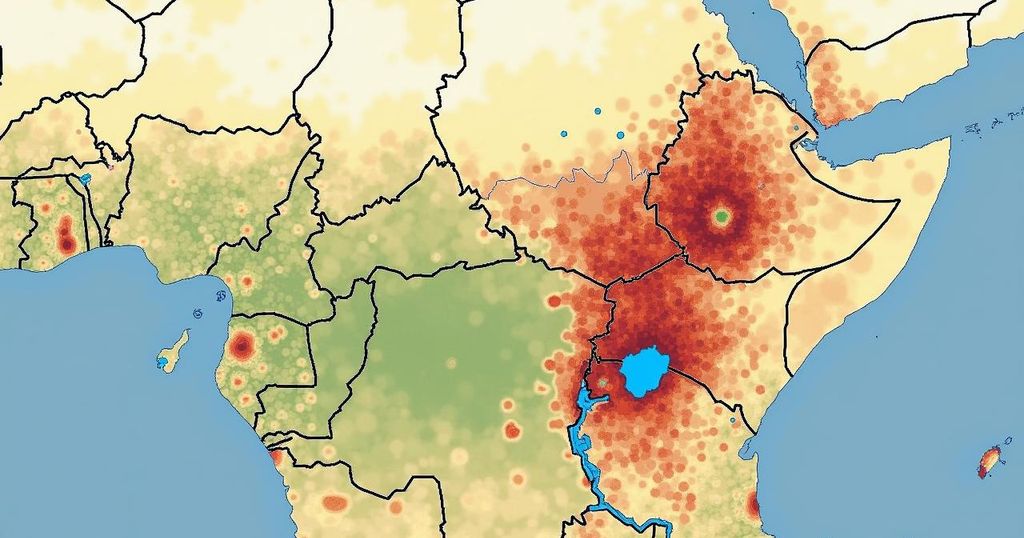This report examines the grave impact of floods on internal displacement, revealing that over 185 million individuals have been displaced since 2008, with Africa significantly affected. Focusing on Sudan, Ethiopia, and Somalia, the study introduces an advanced flood displacement risk model aimed at informing policy-making. Through a detailed vulnerability assessment and probabilistic modelling, the report predicts a substantial increase in average annual displacement, emphasizing the need for comprehensive policies to mitigate flood-induced risks and protect affected populations.
The report emphasizes the alarming impact of floods on global displacement trends, revealing that over 185 million individuals have been forcibly displaced internally since 2008, with Africa accounting for approximately 29 million such displacements from 2008 to 2022, making it the second most affected region worldwide. This study particularly sheds light on the Horn of Africa—specifically Sudan, Ethiopia, and Somalia—by introducing a groundbreaking flood displacement risk model developed through Work Package 3 of the HABITABLE project. The objective of this model is to facilitate precise forecasting of future displacements, thus aiding the formation of effective policies. Utilizing a comprehensive vulnerability assessment, this methodology includes factors typically overlooked by conventional risk evaluations, encompassing direct impacts on housing and livelihoods in conjunction with the indirect effects on vital services and infrastructure. Adopting a probabilistic approach, the study advances climatic, hydrological, and hydraulic modelling to gauge the impacts that prompt displacement. The research captures displacement risk through metrics such as average annual displacement (AAD) and probable maximum displacement, innovatively integrating the most recent technological advances alongside a sophisticated vulnerability assessment approach. The findings highlight a projected increase in AAD that may range from two to four times current levels under various scenarios, while the most pessimistic forecasts predict risks could surge as high as a ninefold increase in Sudan alone. These findings bear significant implications for enhancing disaster risk reduction measures at both national and subnational levels, enabling the identification of regions susceptible to extensive displacements. Policy makers can leverage this critical information to devise risk-informed strategies aimed at preemptively addressing and mitigating the adverse effects of displacement. The report concludes by advocating for robust policies and strategies to effectively confront flood-induced displacement risks, thereby safeguarding vulnerable populations.
Flood-induced displacement has become a critical issue globally, exacerbated by the rising occurrence of extreme weather events attributed to climate change. In regions such as the Horn of Africa, where floods and other environmental challenges pose significant threats to communities, understanding and addressing the nuances of displacement risks is vital. The HABITABLE project has sought to innovate the approach to displacement risk through advanced modelling techniques, incorporating various vulnerability factors important for crafting effective policies. This specific study focuses on the unique conditions present in Ethiopia, Somalia, and Sudan, providing the necessary insights that will aid governments and humanitarian organizations in making informed decisions before and during crisis situations.
In summary, this study presents a detailed analysis of flood displacement risks in the Horn of Africa, underscored by innovatively designed methodologies and various predictive scenarios. The striking potential increases in average annual displacement highlight the urgency for proactive measures and substantial policy development. By understanding these dynamics, decision-makers can better prepare to mitigate risks and protect communities vulnerable to displacement, ultimately contributing to enhanced resilience in the face of climate-induced challenges.
Original Source: reliefweb.int






